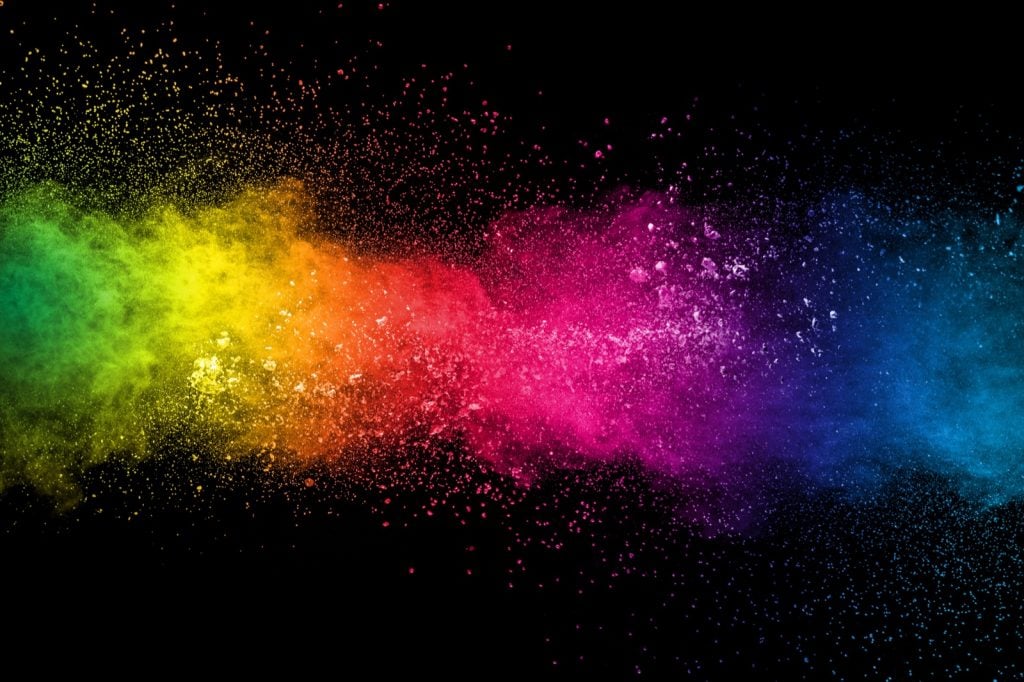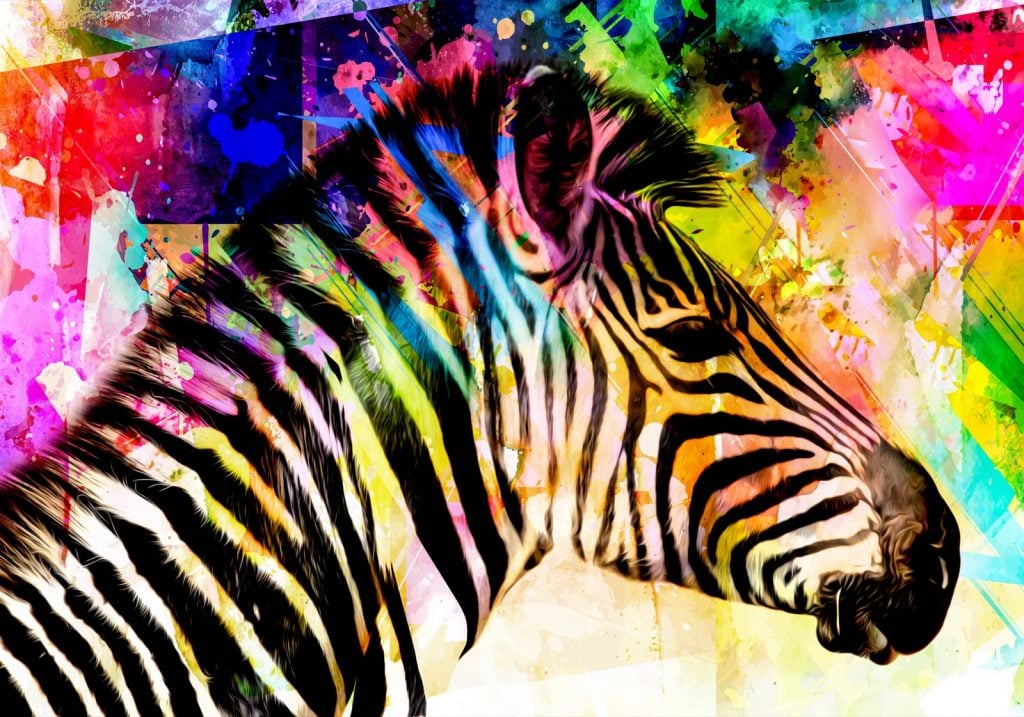
For many, rainbows are seen as a miracle of sorts. When we see a rainbow in the sky, it means the sun is reflecting off the moisture in the air in just the right way to display a spectrum of color that will send people running from the far corners of their house into the front yard to enjoy the spectacle.
But what about black and white? These are both hues that play important roles in our lives, from a bride wearing white on her wedding day to celebrating an anniversary in a “little black dress.” Don’t these deserve some attention as well? What exactly is their role at the table? And are black and white colors? Let’s find out.
Physics Take on Black and White

Defining color is about more than pigment. It’s about light. And according to physics, black and white are technically not colors because they don’t have their own wavelength.
When you see black, it is because visible light is missing. White is wavelength overload. The presence of all visible light frequencies.
This is why if you block out all external light sources, you see black. If excessive light is shined in a small space, you may see white – unless you shield your eyes.
Additive Color Theory

Light in its purest form is white; this is according to additive color theory.
In order for colors to appear, the light needs to be filtered through a prism and be presented in various wavelengths.
The rainbow effect is a manifestation of a natural prism that shows the main primary and secondary colors; red, orange, yellow, green, blue, indigo, and violet.
Because these colors are “born” from the manipulation of white light, the additive color theory recognizes white as a color but still maintains that black is not a color.
Subtractive Color Theory

The subtractive theory is less concerned about white but instead looks at color in terms of mixing paint pigments or dye.
You have only to open a box of crayons to deduce that there are much more than seven hues in the color spectrum. While black and white are in the box, with the subtractive theory, they are set aside.
Creating color needs to be possible by finding the right balance between different levels of the three primary colors. If you can mix any combination of red, blue, and yellow, you can develop a new color. By mixing equal amounts of the primary colors, the resulting hue is black.
This means that black is a color because it is possible to make black even if you don’t have the right crayon or paint in front of you.
How We Humans See Color

While it is interesting to look at the science, how most people see color has little to do with how light passes with prisms or what happens when you mix paint together. If there is a purple scarf in the closet, a red sock in the drawer, a black coat on the rack, or white tennis shoes on the floor, we tend to refer to it as color. The old physics lessons are no more than a fleeting thought.
The color we see isn’t always the same from one person to another. Science considers color as the range of electromagnetic energy that is visible to the human eye. Color manifests as wavelengths in the visible range, which happens to be between 380 and 750 nanometers. Most people see colors in a similar wavelength range but not necessarily an identical range. Seeing red, for instance, means seeing a wavelength between 620-750 nanometers.
Many people are colorblind and have a lower range of color that they can see, rather than seeing the world in black and white or even grayscale. Their retinas are missing certain photoreceptors. Without green photoreceptors, green and blue look the same.
Understanding how we see color involves breaking down the eye. It is relatively common knowledge to look at the main parts of the eye; the iris, the lens, the cornea, and the retina, but deeper understanding happens when the retinas are looked at more thoroughly and broken down into even more components, the cones, and rods.
Our color receptor cells are called cones. The three kinds of cones in the human eye makes us trichromats. We see red, green and blue. Some animals, such as birds and bees, have more cones than humans, and can actually see a wider range of color, and other animals, such as cats and dogs, have only two cones and are dichromats, which gives them a more narrow range of color in their vision.
In Reality, Black and White Colors are Often the Stars of the Show

There can be a lot of disagreement about how we think about black and white and whether or not we count them as colors, but they are both important parts of our world. They represent the ultimate contrast and often bring a lot of clarity to our lives. Black and white, as well as shades of gray, are our color training wheels.
Before color televisions were developed, we experienced the visual medium in black and white. Different levels of black and white are common in the animal kingdom, from domestic animals like dogs and cats to zebras. The decision to wear black or white clothing often comes with varying connotations, depending on the item worn. It suggests a brightness or a brooding or even a sense of formality and sometimes bravery. In a room full of people dressed in all sorts of colors, all eyes go to those wearing black and white.
When we don’t overthink it, there is no question that both black and white are considered colors by most people. It is impossible to leave them out of the equation. In everyday life, we are rarely technical enough to decide that they are not colors. We commonly include them both when describing color, and they are both included in a simple box of eight crayons.
White can be part of the mixture process when taming any color’s brightness or boldness becomes necessary, including black. A tamed black is gray, a tame red is pink, etc. Adding black will simply overtake the rest of the color and cancel it out. The “color” black becomes its own island in that sense.
Life Is Not All Black and White

In everyday life, most of us have made up our minds on how we choose to see color, including black and white, at least to some extent. Still, it is important to keep studying and growing our understanding of color. That understanding allows for technology to keep giving us a better and better visual experience and could even lead to developments that help those with visual perception problems or colorblindness.
We need all the colors to get everything we need out of what we see and live the brightest and light-filled lives that we can. All colors make the world go round, from black and white to rainbows to everything in between. What would our lives be without it? Thankfully, most of us will not have to learn the answer to that question.



